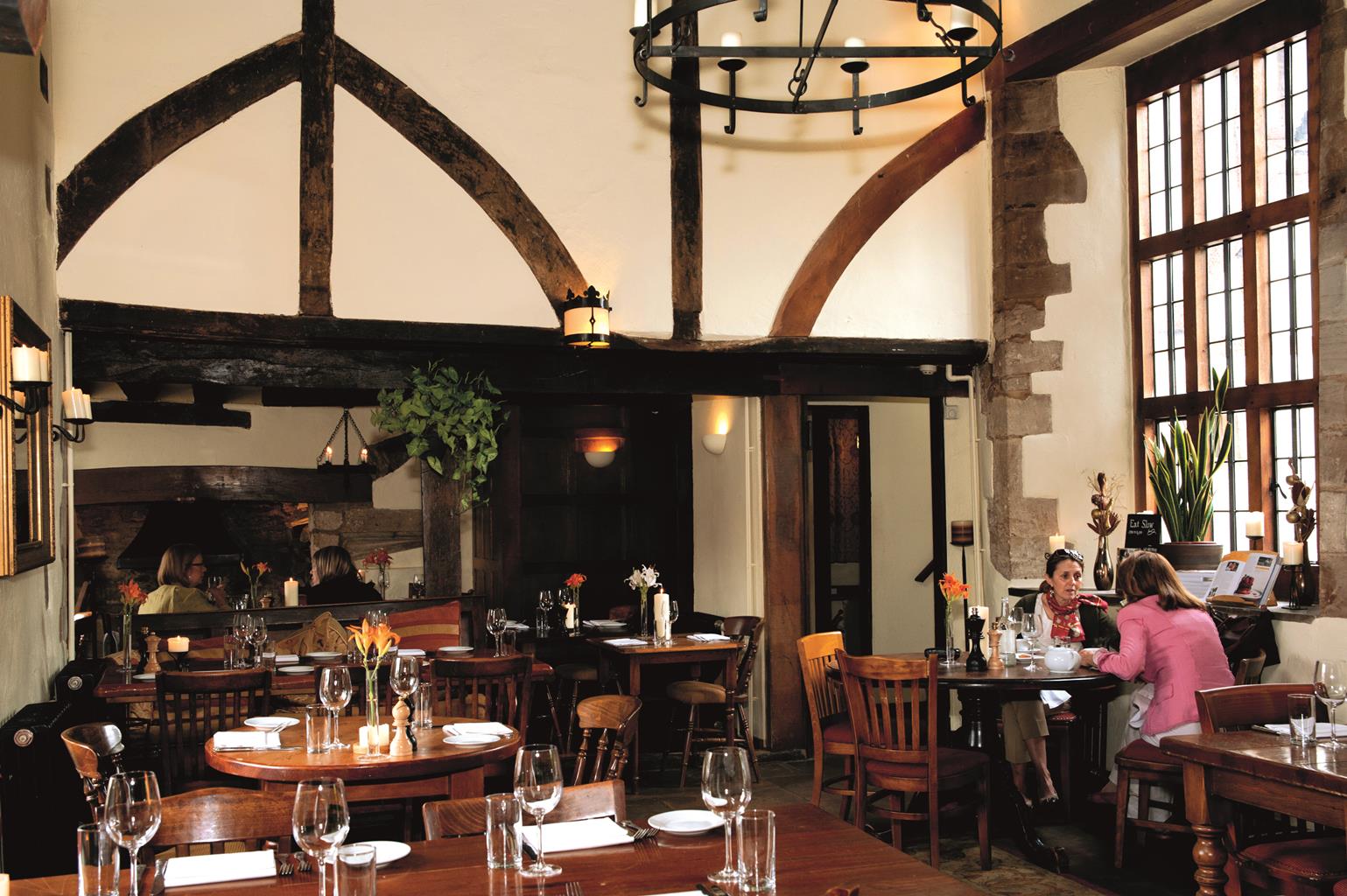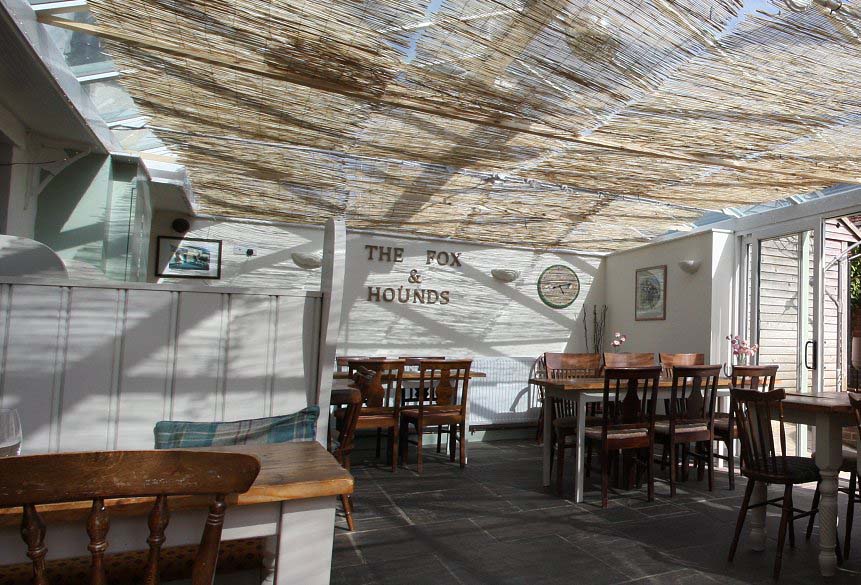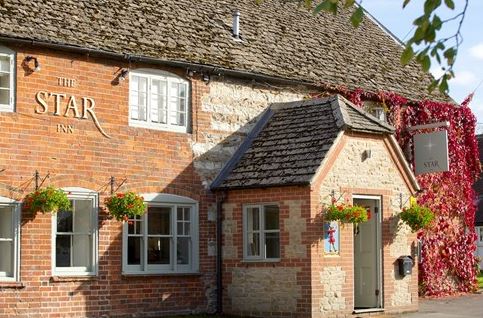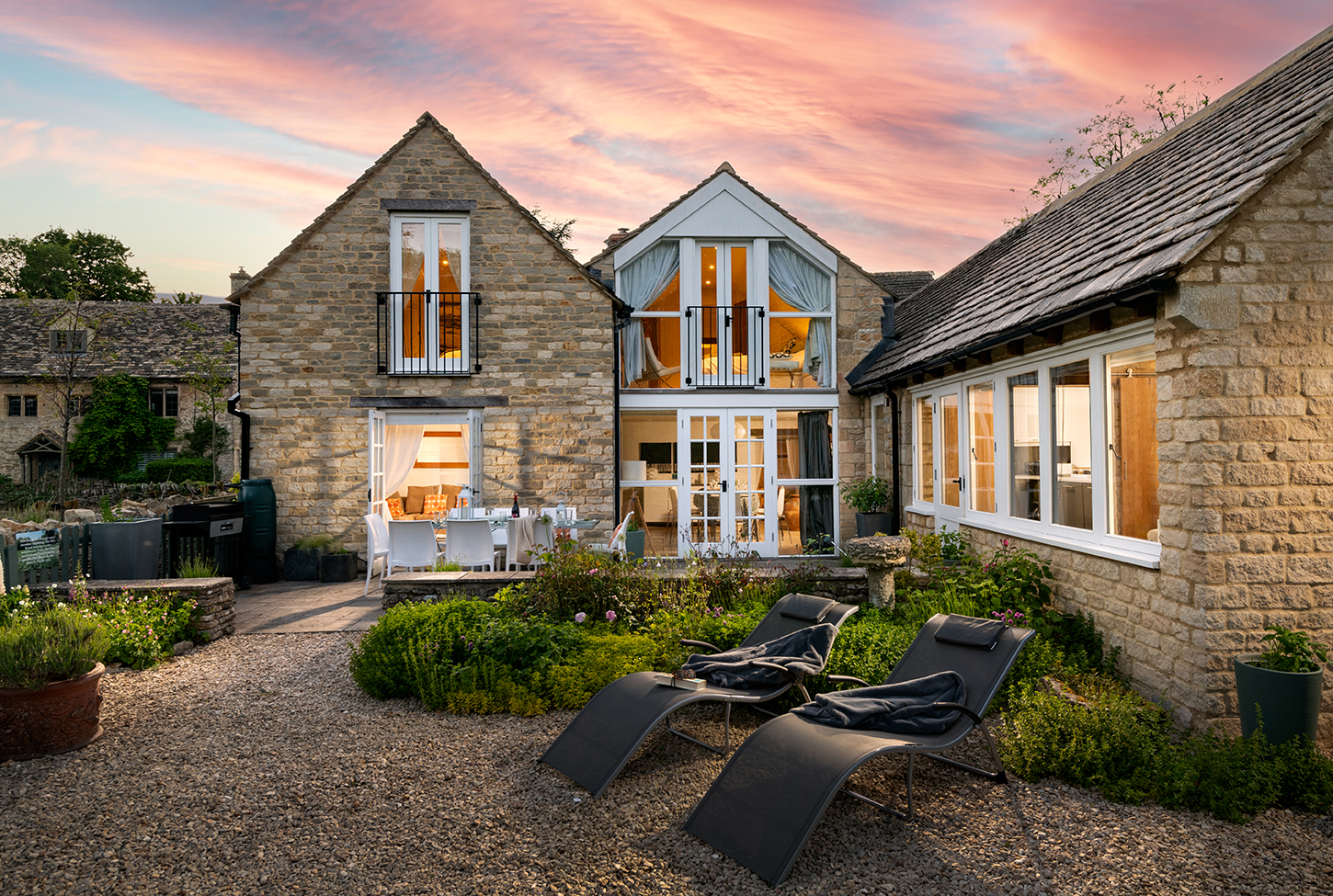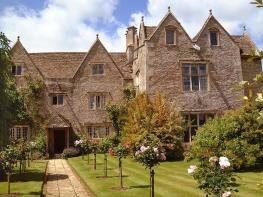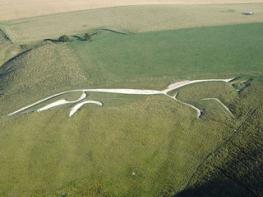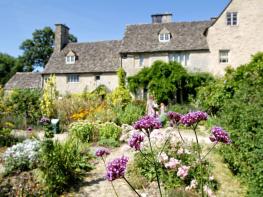Goodlake Barns are located just outside the historic market town of Faringdon in the Vale of…
Buckland's Palladian masterpiece

3.5 miles (5.7kms)
About the walk
The closing stages of this very pleasant walk reveal a striking glimpse of imposing Buckland House, described by the architectural historian Nikolaus Pevsner as ‘the most splendid Georgian house in the country.’ This masterpiece of Palladian architecture dates back to the middle of the 18th century and was erected by John Wood of Bath for Sir Robert Throckmorton, who had it built to replace his previous manor house. Sir Maurice and Lady Fitzgerald eventually acquired the house and lived there until 1947.
Prior to a visit by Edward VII in 1908, Buckland House was enlarged and among many visitors over the years was Winston Churchill and Edward VIII, who attended shooting parties on the estate. Queen Mary apparently stored objets d’art at Buckland during World War II. The house later passed to Major Richard Wellesley, grandson of Lady Fitzgerald, and in 1962 he advertised it for rent in The Times, quoting £8 per week. A year later Buckland became an independent university college for overseas students, and in 2004 it was bought by the former Grand Prix motor racing driver and entrepreneur Paddy McNally. Buckland House was also voted Best Restored Georgian Country House of 2010. Recent years have seen extensive improvements and restoration work.
With its central block of mellow stone and octagonal pavilions at either end – one formerly a chapel, the other a library – the house is a perfect example of neoclassical architecture. There were originally 15 bedrooms, though the number later increased to 19, and the estate includes a large lake, a cricket ground and a deer park of 150 acres. It is rumoured that the ghost of a white lady haunts the house. The village of Buckland is equally charming, with lines of stone houses and thatched cottages. The former telephone box by the village memorial hall is now a book stall, a perfect example of how modern technology, in the form of mobile telephone use, has rendered these quaint old landmarks obsolete. Many villages around the country have put the old boxes to good use.
Walk directions
From the Memorial Hall car park turn right, pass Wheelwright Court on the left and when the road reaches a right bend, with a footpath on the left, go straight on along a grassy path. Approaching the A420, cross a stile and go diagonally right, crossing the busy road with extreme care.
Look for a stile and a footpath sign to Pusey (1 mile – 1.6km) and follow a broad grassy path between fence and hedge. Paddocks can be seen on the left. Head towards the outbuildings of Mount Pleasant Farm and bear left about 75yds (69m) before a gate leading into the farm. Cross a drive leading to the farm and maintain the same direction, passing through a wooden gate. Cross the field, keeping in line with power cables, pass over the next stile and follow the path between lines of trees. Beyond them, strike out across farmland, following the obvious path. Make for a wooden gate leading out to the road and turn right, walking through Pusey.
Follow the road round to the right, heading for Gainfield and Stanford-in-the Vale. Make for the edge of the village and beyond the pavement continue for a short distance, bearing right at a bridleway (signposted Faringdon). Follow the obvious right of way, pass through a strip of woodland and continue between fields. Eventually you reach the road at a gate with a bridleway sign.
Cross over and keep going, skirting more woodland. At the point where a bridleway crosses the route of the walk, by a field corner on the right by some pine trees, turn right and head north. The field on the right is known as Middle Ash Bed. On reaching the woodland corner, on the left, follow the track as it curves to the right. Pass through a gate and head across farmland, following the bridleway beside an assortment of cottages, converted barns and granary buildings. This is the Home Farm complex. Pass a turning to North Cottage and continue on the main track to the A420.
Cross the often very busy road with extreme caution to a stile. Cross it onto a drive and pass a stone lodge. Cross the next stile just a few paces beyond it and follow the path between fences and beside parkland. Head for trees with a brief, striking view of Buckland House over to the left in the distance. Cross the next stile and pass through trees to the road. Turn left, pass The Lamb Tavern on the left and at the T-junction with St George’s Road in the centre of Buckland, turn right and return to the Memorial Hall car park.
Additional information
Field and parkland paths and tracks
Rolling farmland
On lead during middle stages and on open farmland
OS Explorer 170 Vale of White Horse
Spaces at the Memorial Hall car park in Buckland
None on route
WALKING IN SAFETY
Read our tips to look after yourself and the environment when following this walk.
Find out more
Also in the area
About the area
Discover Oxfordshire
Located at the heart of England, Oxfordshire enjoys a rich heritage and surprisingly varied scenery. Its landscape encompasses open chalk downland and glorious beechwoods, picturesque rivers and attractive villages set in peaceful farmland. The countryside in the northwest of Oxfordshire seems isolated by comparison, more redolent of the north of England, with its broad views, undulating landscape and dry-stone walls. The sleepy backwaters of Abingdon, Wallingford, Wantage, Watlington and Witney reveal how Oxfordshire’s old towns evolved over the centuries, while Oxford’s imposing streets reflect the beauty and elegance of ‘that sweet city with her dreaming spires.’ Fans of the fictional sleuth Inspector Morse will recognise many Oxford landmarks described in the books and used in the television series.
The county demonstrates how the strong influence of humans has shaped this part of England over the centuries. The Romans built villas in the pretty river valleys that thread their way through Oxfordshire, the Saxons constructed royal palaces here, and the Normans left an impressive legacy of castles and churches. The philanthropic wool merchants made their mark too, and many of their fine buildings serve as a long-lasting testimony to what they did for the good of the local community.
Nearby stays
Restaurants and Pubs
Nearby experiences
Recommended things to do
Why choose Rated Trips?
Your trusted guide to rated places across the UK
The best coverage
Discover more than 15,000 professionally rated places to stay, eat and visit from across the UK and Ireland.
Quality assured
Choose a place to stay safe in the knowledge that it has been expertly assessed by trained assessors.
Plan your next trip
Search by location or the type of place you're visiting to find your next ideal holiday experience.
Travel inspiration
Read our articles, city guides and recommended things to do for inspiration. We're here to help you explore the UK.



